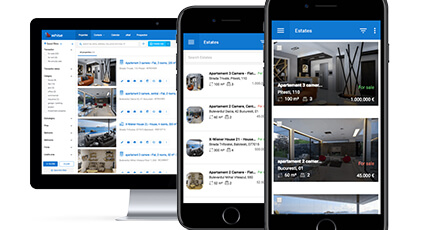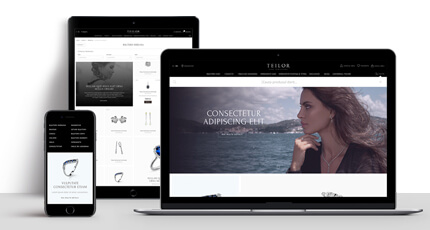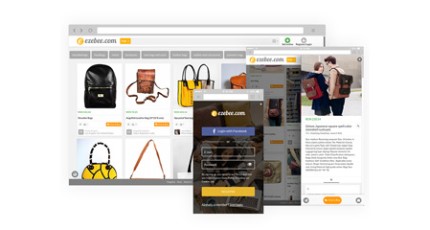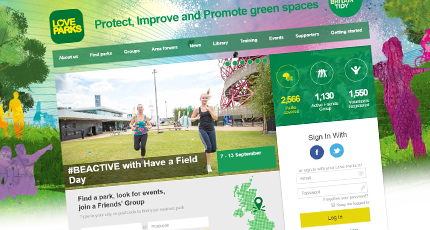While planning anything these days seems as risky as unrealistic, looking up at the next technology trends remains a wise thing to do next. The pandemic year served us several tough lessons and forced us to cope with changes instantly.
At first sight, our mindsets oscillate between “going back to normality” and “hoping for the best, but being prepared for the worse”. In reality, we, all, know that we have to take into account a “new normality” in which technology plays an essential role.
Look at the following trends that experts announce for 2021 (based on the pandemic year’s market events).
Retail
The trends are obvious: customers will continue to be interested in BOPIS systems (buy online, pick up in-store), will pay more attention to those brands that are able to offer various payment methods, and will buy more often from those who sell products with a real-feel touch – using AR/VR reality.

DELIVERY APP (prototype-based)
Ordering and transportation made easy through a user-friendly and sales-booster app. From early adoption to customized version – our dedicated dev teams are ready to turn your business needs into a sales generator.
Finance
Finance is, definitely, in the top 3 industries that have to migrate their activities fast into the virtual space and place secure, reliable, and performant tools at their clients’ fingertips.

In 2021 the digital trends will continue to dominate the finance companies, so they will:
- focus more on digital capabilities and less on physical interactions;
- invest in modernizing the legacy system;
- manage security, identity, and privacy;
- build and redesign the workplace in a modern and safer manner.
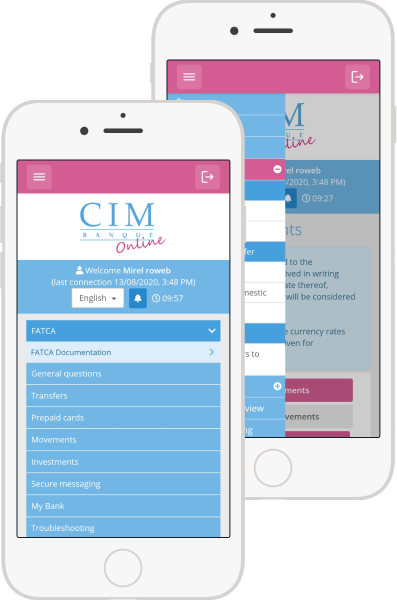
Mobile App for CIM Bank
We developed a mobile app that helps the client to offer 3600 banking experience through extended capabilities and safe & secure services.
Workplace
- simplifying and unifying the remote work by using micro app technology;
- increasing efficiency through artificial intelligence and machine learning;
- providing a safer work environment with IoT.
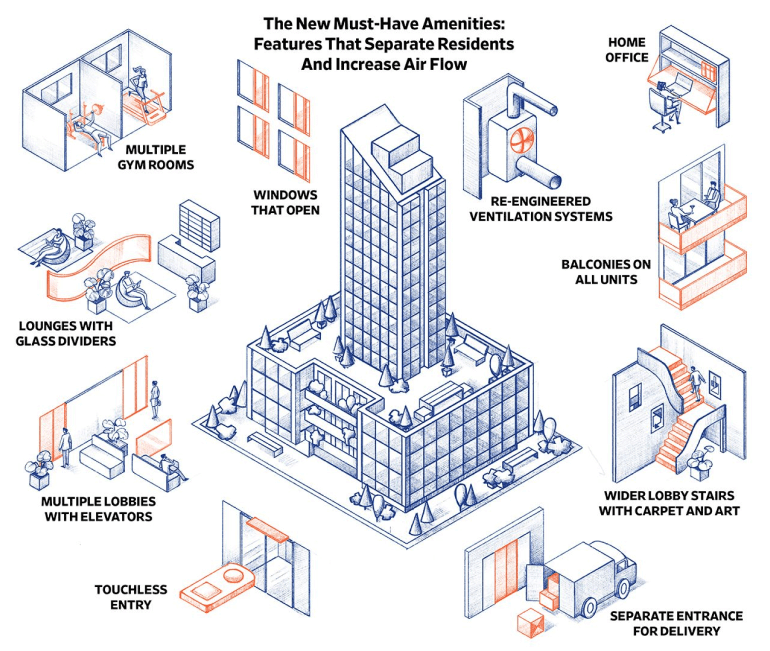
Image source: Wall Street Journal
Real estate
10 real estate technology trends to watch for optimizing your real estate business strategy Digital tools for accurate product evaluation – more sophisticated techniques that help agents to determine the value of a new and/or unique product.
- All-in-one platforms (e.g., marketplace platforms);
- Smart transactional tools (from e-payments to document transfers and signatures in digital format);
- Bringing diverse and disparate data in one place and extract valuable insights;
- Proactive tools (smart apps) to respond to customers’ needs (e.g., matching search criteria, automation);
- Digitalization of showings (AR/VR and 360-degree photography);
- One-click tools for setting appointments, e.g., via chat;
- Devices-friendly properties tours (e.g., tours available directly from the smartphone) inclusive automated self-touring technology);
- Online integration of diverse real estate activities (from e-mail notifications to documents transfer, fee payments, etc.);
- Personalized experiences (complete tracking and overview of real estate clients/potential clients’ behavior and follow-up them with personalized messages).
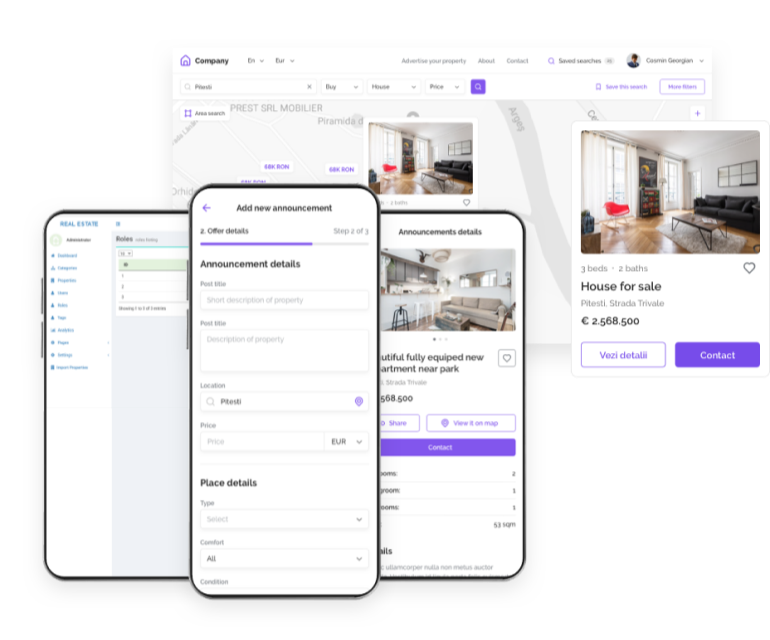
Marketplace development
This type of platform brings entrepreneurs and customers on the same page and can offer access to a wide variety of commercial offers.
Education
In the past year the education sector was forced to take the greatest leap (from offline programs to online ones). The impact was experienced by teachers, children, and parents equally. It is expected that in 2021 the extension of these digital capabilities to grow, 3 main trends being more obvious than others:
- Chatbots: these will be important tools for engaging learners with lessons and turn the educational process into a conversational one – more personal, more learner-friendly;
- VR/AR: virtual and augmented reality will remain a great substitute for physical interactions and a helpful way to involve children in experiential activities (cultural trips and educational days);
- Virtual lessons: these types of lessons have grown in 2020, and things won’t stop here.
Tourism
The traveling & tourism industry was, for sure, one of the most affected industries. It is expected that this domain will still have to face important challenges in 2021, also.
Even if people’s appetite for traveling will be the highest so far after spending a year mostly cooped up indoors, the companies from this industry will still have to take into account 3 main challenges:
- to provide safety through punctual measures;
- to take the risk of quarantine situations;
- to provide transparency, clear communication, and seamless payment for travelers.
Some examples of how companies choose to use technology for facing all these challenges:
- contactless hotel stays;
- linking the tickets to COVID-19 tests;
- adopt touchless technology (contactless check-in, biometric gates at boarding, and modified meal service to reduce contact with the crew);
- collaborative digital tools for multiple-party sellers (airline companies, hotels, car rental companies, etc. keep in touch with travel sellers).
Media & Entertainment
The trends for the media and entertainment industry are defined (in 2021) by 3 key-questions:
Even if people’s appetite for traveling will be the highest so far after spending a year mostly cooped up indoors, the companies from this industry will still have to take into account 3 main challenges:
- What does the customer need? A: smart access to original and engaging content.
- trends: developing dynamic digital solutions that allow companies to gather valuable insights on customer behavior patterns in no time + ensuring a steady stream of high-quality content.
- What does the customer want? A: To have access to experiences beyond stand-alone products.
- trend: convergence of content and distribution channels
- What does the customer expect? A: New opportunities to access media and entertainment products.
- trends: companies will thrive on having real-time visibility, insights, and control over their assets, products, and services.
Food & Beverage
The food industry will be dominated in 2021 by 5 key factors:
- transparency;
- omnichannel delivery;
- customization;
- less physical interactions;
- payments flexibility.
Technology can respond to each of these factors – individually – through dedicated features and apps but also can integrate digital tools able to respond to all of them (e.g., through a complete digital solution: website + delivery system + CRM + ordering App + contactless menu + contactless payments).

Complete sales solution
Complete solution for delivery, online sales/reservations/orders & marketing:
- Website ready for online sales;
- Mobile App (IOS & Android) for offers and orders;
- Mobile App based on CRM (customer database);
- Contactless (online) menu;
Recruting & HR
Artificial Intelligence and Automation for
- saving time (e.g., communicate via chatbots);
- screening the candidates’ profile fast;
- improving the quality of hire;
- offer continued engagement with relevant job opportunities to candidates.

Pearn Kandola SAAS platform
A “Software as a Service” (SaaS) application that is able to provide a higher user experience and increase interaction with Pearn Kandola’s products at various user levels.
Want to get ready for 2021 challenges? See why is Roweb the right development partner for your company.
TECHNOLOGIES THAT WE USE:








METHODOLOGIES
- Agile
- Scrum
- Kanban
- Waterfall
ROLES WE PROVIDE
- Project managers
- Business analysts
- Developers
- Q&A specialists
- Scrum masters
- UX Designers
Starting a new project with us it’s easy. Fill the form and send us relevant details about your software development needs, and we’ll get back to you as soon as possible with a project brief or even with a project proposal (if the project requirements sent by you are complete).
Start your next digital project
with Roweb’s team!
Sources: forbes.com, financesonline.com, irishtechnews.ie, hospitalitytech.com, www2.deloitte.com, foodindustryexecutive.com, recruitingblogs.com


